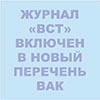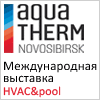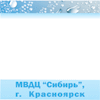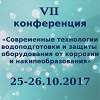№9|2014
DRINKING WATER SUPPLY
bbk 000000
UDC 628.16
The use of VPK-402 coagulant for the removal of suspended solids of different origin and dispersiveness from water
Summary
The coagulation ability of VPK-402 organic coagulant in reducing water turbidity determined by fine mineral particles of different origin and dispersiveness is considered. Water coagulation was carried out under laboratory conditions following the pattern: mixing-flocculation-sedimentation. The concentration of suspended solids in water was determined from turbidity; dispersivenes – from particle hydraulic size U0. The studies were carried out with modeling water with turbidity less than 115 mg/l containing mainly fine-dispersed suspension of bentonite clays, kaolin, quartz, calcium carbonate and titanium dioxide with less than 0.2 mm/s hydraulic size. It was found that the hydraulic size of clay suspensions was determined by their swelling capacity in water; whereas for quartz, calcium carbonate and titanium dioxide suspension – by the particle size distribution of the original minerals. The optimal dosage of VPK-402 for clay mineral coagulation does not depend on their dispersive characteristics and equals to 0.5 mg/l, i. e. 5–10 times higher than the coagulant dosages for modeling waters with finely dispersed particles of quartz, titanium dioxide or calcium carbonate. The efficiency of water clarification lowers with the increase of the percentage of particles with less than 0.05 mm/s hydraulic size irrespective of their origin. The results of the Kuban River water purification validated the obtained regularities. The efficiency of using VPK-402 organic coagulant for reducing water turbidity depending on the origin and dispersiveness (hydraulic size) of suspended solids represented by bentonite clay, kaolin, quartz, calcium carbonate and titanium dioxide particles is considered. The obtained results can be used in practice for optimization of water coagulation to remove suspended solids.
Key words
turbidity , suspended substances , chromaticity , coagulation , hydraulic size , natural water , organic coagulant , polyelectrolyte
The further text is accessible on a paid subscription.
For authorisation enter the login/password.
Or subscribe
REFERENCES
- Draginskii V. L., Alekseeva L. P., Getmantsev S. V. Koaguliatsiia v tekhnologii ochistki prirodnykh vod [Coagulation in natural water treatment technology. Moscow, 2005, 576 p.].
- Gandurina L. V. Sovremennye sposoby povysheniia kachestva pit’evoi vody. Inzhenernoe obespechenie ob”ektov stroitel’stva [Advanced methods of improving drinking water quality. Engineer support facilities of construction projects: Background information. Moscow, VNIINTPI Publ., 2003, is. 4. 59 p.].
- Pedashenko D. D., Bozhko L. N. Proizvodstvennye ispytaniia obrabotki vody reagentami polyDADMAC i «Aqua-Aurat™10» dlia vodosnabzheniia g. Rostova-na-Donu [Field tests of processing water with polyDADMAC and Aqua-Aurat™10 chemicals in water supply of Rostov-on-Don: Proceedings of scientific and practical conference «Water treatment technology» – «Technovod–2005». Kazan, 2005, 67 p.].
- Lysenko M. P. Glinistye porody russkoi platformy [Clay rocks of the Russian table. Moscow, Nedra Publ., 1986, 254 p.].
- Grishina E. P. Osnovy khimii okruzhaiushchei sredy. Chast’ 3. Khimicheskie protsessy v zone gipergeneza i fiziko-khimicheskie svoistva pochv [Backgrounds of environmental chemistry. Part 3. Chemical processes in hypergenesis zone and physical and chemical properties of soils: Textbook. Vladimir, Vladimir State University Publ., 2011, 50 p.].














